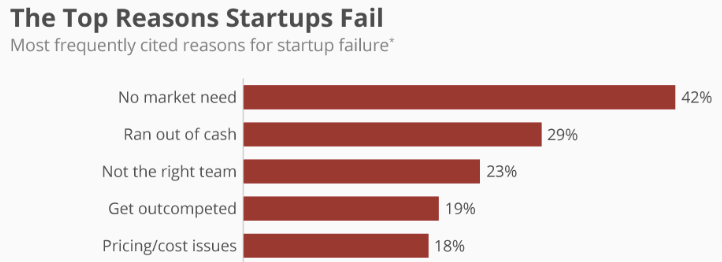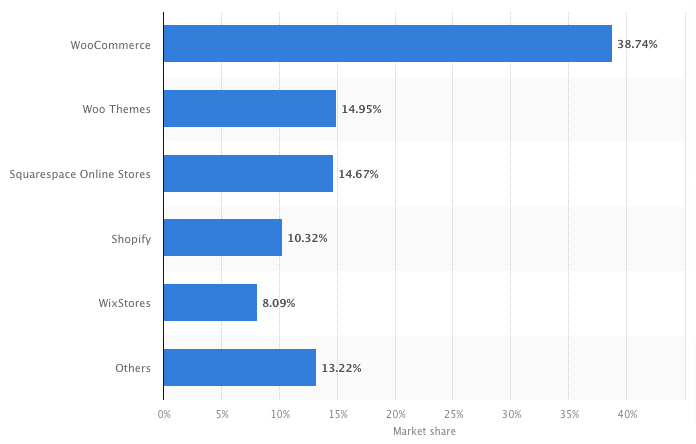E-commerce Strategy 101: Your Comprehensive Guide

With an estimated 12 – 24 million e-commerce websites worldwide, competition in the online retail space has never been fiercer. To stand out from the crowd and hit your business goals, you need a strong e-commerce strategy that outlines how you plan to:
- Reach new audiences
- Convert website visitors into paying customers
- Drive repeat purchases
- Build online brand awareness
Not sure where to start? You’ve come to the right place. In this guide, we’ll cover all aspects of building an e-commerce strategy, from understanding your target market and building a high-performing website to writing effective product listings and growing trust in your brand.
What Are Ecommerce Strategies?
E-commerce strategies are a combination of tactics designed to help you build a successful online business and hit your growth goals. Those tactics might include:
- Carrying out audience and market research
- Running targeted marketing campaigns
- Designing and optimizing a website
- Analyzing customer data
While e-commerce strategies look different for every business, the ultimate goal is typically pretty similar: expand your customer base, sell more products, and earn more revenue.
So it’s vital that you create an effective strategy. But before you start, you need to consider questions in three key areas of your business:
- Product strategy
- Customer strategy
- Corporate strategy
Product Strategy
A product strategy is a top-level plan that spells out your product’s unique value proposition and what you want it to achieve. To build a product strategy, you need to consider various factors, including:
Research and Development
Define which individual, team, or department at your organization is in charge of researching (and developing) products. If you don’t have the skills or resources to accomplish this internally, you may need to consider hiring a third party to handle R&D.
Target Market Analysis
Creating a successful product is difficult, regardless of industry. For instance, in the CPG space, <3% of new products surpass the benchmark for highly successful launches.
One of the most common reasons for failure is a lack of clarity about the product’s target audience. Who are they and what do they want from a product like yours? And are they prepared to pay for it?
Consider performing a SWOT analysis to better understand how your products meet the needs of your target audience:
Inventory Supply Chain
Supply chain issues are a headache for e-commerce businesses of all sizes, with research from Jungle Scout revealing that 42% of large brands and 27% of small business owners have previously been unable to order new inventory from suppliers. Many of these delays last several months.

It’s vital to consider how you plan to source parts and materials (or the whole product, if you’re not manufacturing it yourself).
Does your planned approach provide enough “wiggle room” to deal with shortages without dramatically hitting your bottom line? And will it be viable for the long term?
Product Line(s)
Building a product strategy is comparatively simple if you only sell a single product.
Unfortunately, the vast majority of e-commerce businesses sell dozens (or hundreds, or thousands) of different products.
You need to take the full breadth of your range into account when developing your product strategy. For instance, an apparel retailer should consider whether they’ll allow customers to customize orders — such as choosing which logo they want on a T-shirt — or if they’ll sell multiple related product lines.
Product Viability
Some products are evergreen, meaning customers might buy them all year round (e.g. running shoes). Others are seasonal, with a specific window in which they’re likely to sell (e.g. sunscreen).
Both can be effective. But it might make sense to consider selling a combination of evergreen and seasonal products to help you drive consistent, year-long sales while capitalizing on key shopping events (such as Valentine’s Day and Christmas).
Competitive Landscape
No e-commerce business is an island. To survive and thrive, you need to identify your biggest competitors, determine their strengths and weaknesses, and figure out how you “win” against them.
Your biggest goal at this stage is to define why a customer would buy from you rather than someone else. In other words, what makes you an attractive proposition? It could be your:
- Pricing
- Customer support
- Shipping times
- Product quality
- Product range
- Product sustainability
Or something else entirely. But once you understand what it looks like, you can focus on promoting your key messaging through marketing and promotions (more on them later).
Customer Strategy
Customer strategy is the unique value and experience you provide to (a specific set of) customers over a given time period. As such, it brings together various strands, from your go-to-market strategy to the way you segment and target customers through marketing campaigns.
Here are some key issues to consider when planning your customer strategy:
Target Audience
Simply put: who are you trying to reach? Many brands combine this information into one or more buyer personas that speak to various traits and characteristics, such as:
- Goals and interests
- Pain points
- Buying power
Sales Channels
From social media to email marketing to pay-per-click advertising, most e-commerce businesses rely on multiple sales channels to reach and convert new customers. Which channels make most sense for your store, based on your audience’s media preferences and online behaviors?
Company Branding
Branding is all about how you present yourself to customers, incorporating elements like your name, logo, and tone of voice.
Some retailers see this as a nice-to-have rather than an essential element of their e-commerce strategy, but effective branding delivers tangible benefits. According to Lucidpress, businesses that consistently maintain their brand benefit from 10% – 20% higher revenues.
Customer Retention
According to Gorgias, repeat customers represent 21% of the average e-commerce brand’s customer base, yet generate 44% of revenue and 46% of orders.
Despite this, only 20% of online retailers have a dedicated customer retention budget, while 63% allocate more budget to acquisition than retention.

Retention should be a key focus in your e-commerce strategy. Use your existing customer data or market analysis to understand your current retention rate and purchase frequency — and consider how both can be improved.
Customer Experience and Usability
Globally, three-quarters of consumers say customer experience plays an important part in their purchasing decisions. Yet less than half of shoppers in the US believe companies deliver good customer experiences.

Get it right and you can make customer experience and usability a key differentiator for your brand. To do that, you’ll need to consider everything from website usability to customer support.
Corporate Strategy
A corporate strategy is a long-term plan detailing how you intend to beat the competition and deliver value to customers and stakeholders. Consider the following elements when developing your corporate strategy:
Financing
The second most common reason for startups to fail is because they ran out of money.
As such, it’s essential you consider your finances when building a corporate strategy, including how much cash you need to get started (and how much more you’ll require to meet your growth targets).
You should also think about sources of finance, such as a line of credit with a bank, or an alternative solution like Shopify Capital.
Human Resources
Unless you’re a one-person operation, your human capital will play a vital role in the success of your e-commerce business. To attract and retain the right people, you need a robust HR strategy that takes into account factors like:
- Salary and bonuses
- Employee benefits
- PTO
- Continued professional development
- Disciplinary procedures
Risk Management
According to the Federal Emergency Management Agency, about one in four businesses don’t reopen after experiencing a disaster, so you’ll want to plan for potential risks — including developing a cybersecurity strategy and defining who’s responsible for legal and regulatory compliance. Again, if you don’t have the skills to do this yourself, consider hiring an external provider to help you out.
Shareholders
Depending on how long you’ve been a business and what your future plans look like, you might never have to think about shareholders — or you might need to deal with them imminently.
Even if you don’t have shareholders, you may have some other external investors, so you need a plan for managing them. That includes thinking about how (and how frequently) you’ll communicate with them and how you intend to repay their investments over time.
Other Questions to Help Create a Winning E-Commerce Strategy
There’s already plenty to think about across your product, customer, and corporate strategy. But those aren’t the only factors for developing a winning e-commerce strategy. Here are some more vital considerations that don’t fall into any of the categories we’ve already discussed:
Determine Your Personal Values and Goals
According to Google, over four-fifths of shoppers say they prefer it when a brand’s values align with their own, while three-quarters of consumers have split up with a brand over a conflict in values.

All of which means it’s never been more important for e-commerce businesses to identify what they stand for.
Take the issue of environmental sustainability. It’s a key focus for consumers, two-thirds of whom actively seek out eco-friendly brands, so it’s no surprise that sustainability has also become a priority for many online retailers.
Making environmental sustainability an integral element of your brand values might impact your business in the following ways:
| Product | Fulfillment | Social responsibility |
|
|
|
Whatever values and goals you prioritize, be sure to practice what you preach or risk being caught out.
For instance, Ipsos found that 34% of consumers research brands to ensure they follow through on their actions when it comes to sustainability.
Understand Your Audience
Consumers increasingly demand personalized experiences, with three-quarters of shoppers expecting brands to understand their needs and expectations.

To deliver on those demanding expectations, you need a clear understanding of your audience, in terms of:
- What motivates them
- What their pain points are
- What compels them to purchase a product like yours
Building a clear picture of your customer base allows you to make more informed decisions about various elements of your e-commerce strategy, helping you better meet the needs of your audience (which, in turn, leads to more sales and higher customer satisfaction). Let’s consider how some of those considerations might look for a brand in the health and fitness space:
Product Selection
By analyzing your audiences’ favorite sports and fitness-related activities, you can stock the types of products they’re most likely to buy — from tennis rackets to running shoes to moisture-wicking apparel.
Customer Experience
When you know what your customers like, you can make it easier for them to find it. That might involve linking to top-selling product categories from your homepage or linking to your refund and exchange policies from product pages. Likewise, if you know their preferred communications channels, you can customize your customer support to fit their needs.
Promotional Messaging
The better you understand your audience, the easier it comes to create effective marketing messaging. For instance, if your research reveals that your customers are interested in keeping fit while saving money, you can demonstrate how your products help people stay healthy and active without having to join a gym or pay for a personal trainer.
Product Pricing
Identifying your average customer’s household income allows you to set pricing accordingly. For instance, if they’re predominantly looking for budget-friendly options, you could promote discounted product bundles — like selling two tennis rackets together with a set of balls for cheaper than the combined price of each individual product.
Develop Long-Term Goals and Visions
Your e-commerce strategy isn’t just about helping you overcome immediate challenges and hit short-term goals; it needs to have one eye on the big picture. For that reason, you’ll want to consider longer-term questions like:
- Where do you want your brand to be in 10 years’ time?
- What needs to happen for you to get there?
- Which metrics and KPIs will best help you track your progress?
One word of caution: be sure to align your overarching vision with your brand values. For instance, if your ultimate goal is to corner the fast fashion market, you’ll probably struggle to persuade customers that sustainability is a key concern for your business.
This isn’t about creating a rod for your own back. There are real benefits to aligning your growth goals and values. For instance, Forrester found that 70% of US consumers say “authentic brands” make them feel more confident, while 71% find them more relatable — and therefore want to support them.
Build a Prioritization Strategy
Clearly, there’s no shortage of things for e-commerce professionals to focus on.
But if everything’s a priority then nothing’s a priority.
Stop yourself becoming overwhelmed by listing all your goals and ranking them from most to least important, then work through it in order. There’s no “correct way” to prioritize your goals — simply concentrate on the stuff that’s most likely to move your business forward right now.
Always Iterate
Many businesses make the mistake of treating a strategy document as a one-and-done exercise.
In reality, the most effective e-commerce strategies are never finished because they’re constantly evolving in line with changing market conditions, new product launches, consumer preferences, and more.
Take the time to regularly review your strategy and revise accordingly to ensure it remains relevant to the needs of your business.
Your Winning E-Commerce Strategy in 5 Simple Steps
Once you’ve got all the theory out the way, you can finally focus on the important matter of implementing your e-commerce strategy.
In the following section, we’re going to discuss how that looks for a brand new e-commerce business.
Depending on the lifespan of your e-commerce store, you might want to jump ahead a few steps to filter out anything you’ve already done. That said, if you launched your website several years ago, it’s always worth looking at it again with fresh eyes — especially if you’ve recently updated your e-commerce strategy.
Step 1: Create a Compelling E-Commerce Website
Unless you want to be 100% reliant on social algorithms or third-party marketplaces (hint: you don’t), you need your own e-commerce store. Here are five factors to consider when building your website…
Choosing a Domain Name
Your domain name should be short and catchy enough to make it instantly memorable. That’s a tough ask, especially given the unimaginably huge number of websites that already exist, with 60.9% of Namecheap customers finding the domain name they wanted wasn’t available.
Fortunately, there are plenty of tools around to make the task slightly easier.
For instance, Shopify’s free domain name generator checks domain name availability and comes up with ideas based on your initial suggestion, while BrandSnap uses AI to generate creative (and available) domain name ideas.
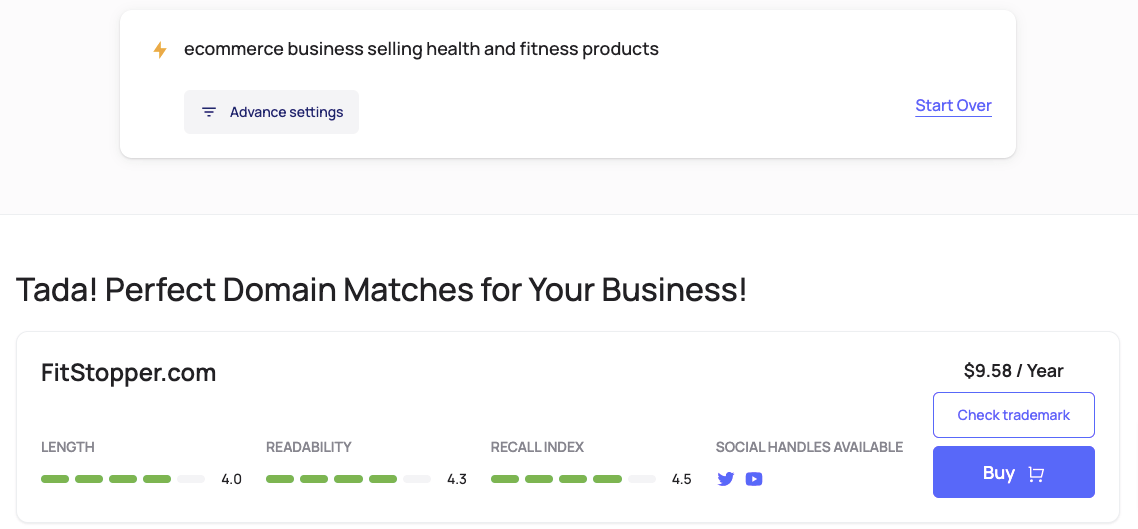
Select an E-Commerce Platform
Choosing an e-commerce platform means you don’t need to code every single element of your store from scratch, making it far easier (and quicker) to launch an e-commerce business.
WooCommerce is the most popular in terms of market share…
…but there are plenty of other options, including Shopify, BigCommerce, and Magento.
Design Website Layout and Structure
“Poor design” is one of the biggest factors that damage consumer trust in websites. And if your store visitors don’t trust you, they’re definitely not going to buy from you.
Not only does your site need to look legit; it should also be simple for users to navigate. As a minimum, you should:
- Create a “shallow” website so visitors don’t have to click too deep to find what they’re looking for.
- Display navigation breadcrumbs so users can easily return to the previous page.
- Use heading hierarchy (i.e. H1 > H2 > H3) to create a logical structure for web pages.
- Add schema markup to help search engines crawl your site more effectively.
Optimizing Website Speed and Performance
Over half of consumers believe e-commerce pages should load in no more than three seconds. And if a website loads too slowly, a further half will abandon their shopping carts.
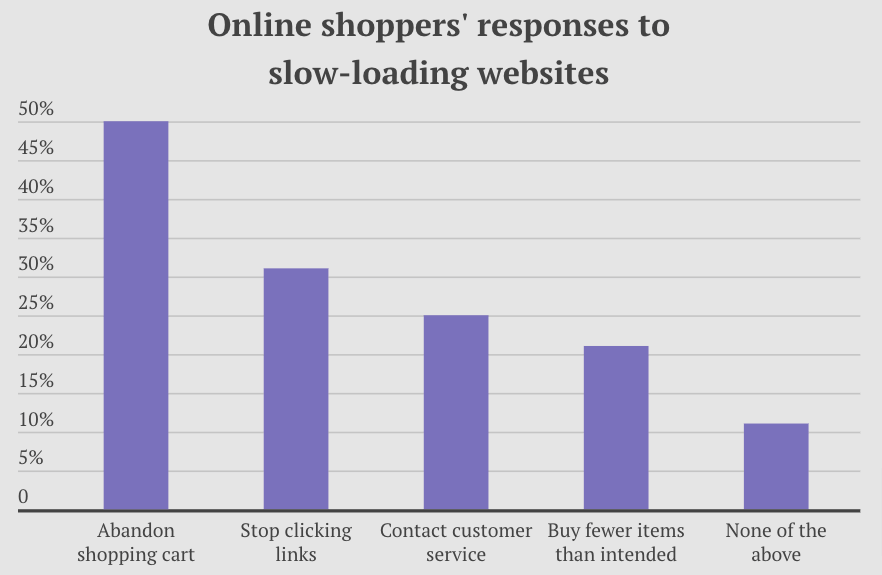
So if you don’t have a fast-loading e-commerce store, you can expect to lose a bunch of customers and revenue. Satisfy your speed-hungry customers by choosing a lightweight website theme. Once your site is live, use Google’s PageSpeed Insights tool to identify areas for improvement.
Incorporating User-Friendly Features
Beyond being fundamentally simple to navigate, your e-commerce store should incorporate various other user-friendly elements, such as:
- Mobile compatibility
- Accessibility for all users
- Well-formatted, easily scannable content
- Consistency across different browsers
- Easy-to-complete forms
Step 2: Ensure Effective Product Listing and Merchandising
Once you’ve persuaded a prospective customer to learn more about a specific product, you want to seal the deal. But if your product pages aren’t up to scratch, there’s a good chance they’ll bounce. Follow these best practices to design product pages that convert…
For more merchandising tips, check out our guide to e-commerce merchandising.
Product Descriptions
Think of product descriptions as adverts that communicate a product’s benefits, and specifications.
Product copy should leave customers feeling confident that this is the right choice for them. Get it right by following these best practices:
- Write with your ideal customer in mind. What would convince them to buy this product?
- Weed out statements you can’t back up. Stick to facts; this is no place for exaggeration.
- Use social proof to close the deal. Review scores, industry awards, and product badges demonstrate how many other people love your product.

- Make your copy easy to scan. It should be quick and easy for customers to find the information they need.
- Describe benefits, not just features. For instance, don’t say a product is made from hard-wearing materials; say it’ll last for 10+ years and carries a lifetime guarantee.
Product Images and Videos
They say a picture is worth 1,000 words. And videos might be worth thousands more, given that 73% of consumers say they prefer to learn about products or services by watching a short video.
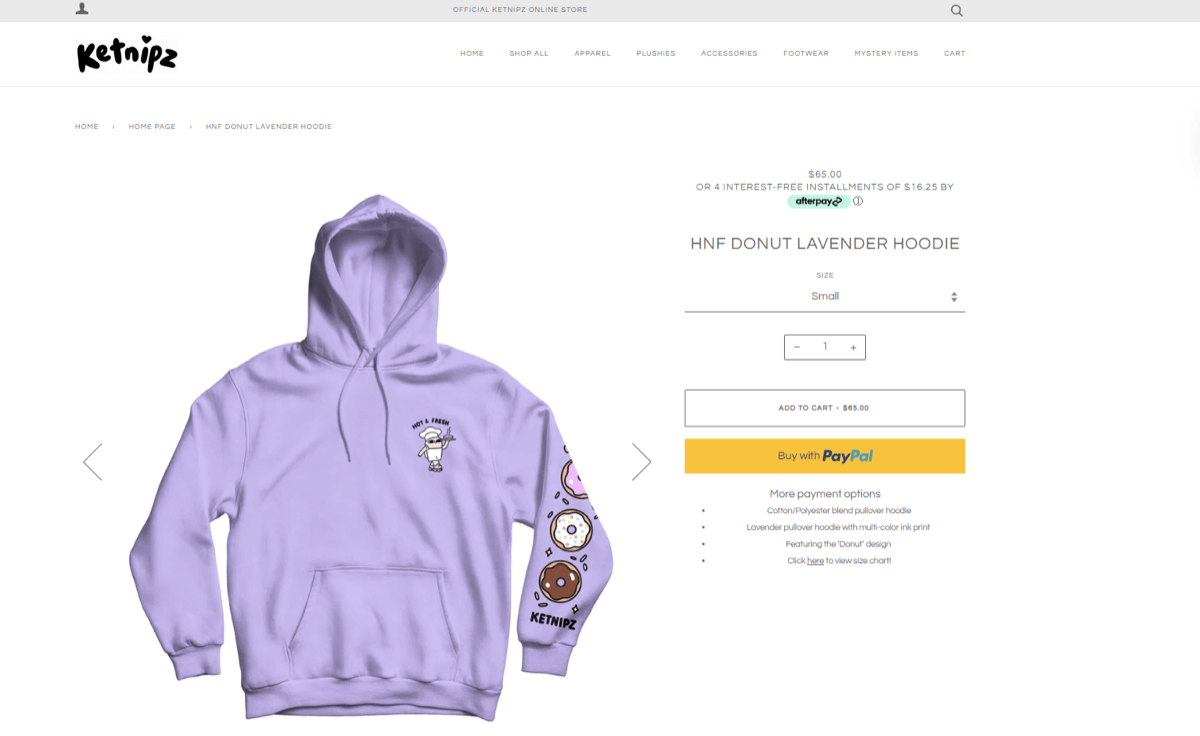
On a basic level, product images and videos help prospective customers feel confident that the product in question meets their needs.
But they also act as an additional marketing tool, giving you the opportunity to sell how it looks — particularly important in verticals like apparel and interior decor.
Pricing Strategy
As we’ve already noted, your pricing strategy should take into account the needs and preferences of your audience (such as targeting bargain hunters with discounted product bundles).
This information should be communicated clearly on product pages.
For instance, if customers can save 10% by purchasing products in a bundle or unlock free shipping by spending a couple dollars more, make sure they know about it.
Cross-Selling and Upselling Techniques
Upsells and Cross-sells are an invaluable way to increase your average order value and customer lifetime value, helping you hit your revenue targets.
For best results, be sure to recommend upsells and cross-sells that are relevant to the customer. For instance, if someone’s browsing tennis rackets, try:
- Upselling them to a more expensive racket
- Cross-selling them a pair of tennis shoes or a pack of tennis balls
Step 3: Build Trust and Credibility
Brand trust is at an all-time low in many markets, with just 47% of brands seen as trustworthy.

Use these tips to demonstrate to prospective customers that you’re legit…
Secure Payment Gateway
Consumers need to feel confident that your payment process is secure and reliable.
The best approach is to provide payment options that match your customers’ preferences, with research revealing that 44% of consumers are more likely to trust — and shop with — businesses if they know upfront that their preferred payment provider is accepted.
Privacy Policy and Terms of Service
Once upon a time, customers might have breezed through (or totally ignored) your privacy policy and terms of service. But in an increasingly data-savvy world, these policies matter.

Online shoppers are more likely to trust you if they feel in control of their data. To that end, Google recommends adopting various privacy practices, including:
- Allowing customers to set privacy reminders. People felt 14% more in control when given this option.
- Asking for permission to personalize a website. This practice increased feelings of control by 8%.
- Pledge to treat customers honestly and fairly. Respondents felt 6% more in control when websites followed this practice.
Customer Reviews and Ratings
Over 93% of consumers read reviews before purchasing from unfamiliar brands online, so the more reviews you have, the better.
Add brand-related review scores to your homepage and product-specific ratings to product pages — and share your best testimonials via social media and email marketing.
Social Proof and Endorsements
Social proof is about persuading customers they’re doing the right thing (i.e. buying a product) because lots of other people have done the same thing.
Reviews, ratings, and testimonials are one form of social proof. But you should also try adding availability badges to collection and product pages to demonstrate that your products are highly sought after. For instance, Verve Coffee Roasters add a warning about low stock levels on their product pages:
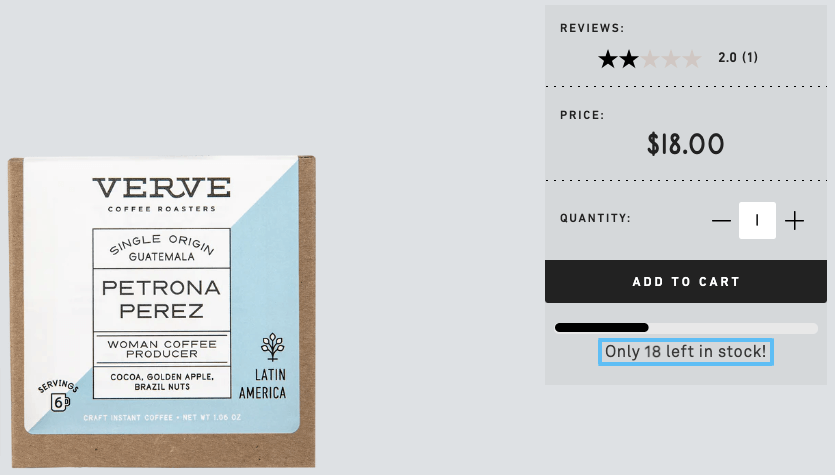
Step 4: Market and Promote
Without effective marketing and promotion, you’ll never hit your growth goals. Here are six issues to consider when building and implementing your marketing strategy…
Creating a Marketing Plan
Sure, you’ve already spent a bunch of time creating your e-commerce strategy. But you should also create an e-commerce marketing strategy that brings together all the tactics, tools, and platforms you plan to leverage to reach new audiences, convert them into customers, and drive repeat orders.
Social Media Marketing
Social media and e-commerce go together like Penn & Teller. Indeed, four-fifths of consumers say they’ve discovered a product on social media and purchased it directly via their phone, while over half shop on social at least once per week.

Bear in mind that different social networks have very different audiences. Facebook skews older than TikTok, for example. So you’ll need to consider the most relevant platforms for your customer base.
Search Engine Optimization (SEO)
According to one survey, a majority of marketers say their highest website ROI comes from organic search.

That’s because organic traffic is totally free and highly qualified. If someone’s searching for “best tennis racket 2023”, there’s a pretty good chance they’re looking to purchase a tennis racket. So SEO should definitely factor into your marketing plans — just don’t expect to rank #1 overnight.
Pay-Per-Click Advertising (PPC)
PPC helps brands generate search traffic without waiting months — or years — for their content to climb the organic rankings.
Of course, they have to pay for the privilege. Average costs per click range from $1.36 in real estate to $8.67 in legal services:

Depending on your sector and profit margins, PPC might be a valuable traffic source — or totally cost-prohibitive.
Email Marketing
Email marketing generates an impressive return of $36 for every $1 spent, which makes it a tough channel for e-commerce marketers to ignore.
Email maintains its position as the premier conversion channel among Shopify stores, with an average conversion rate standing at 4.29%.
Of course, it’ll only work if you have plenty of (the right) people on your email list. Consider running limited-time offers — such as free shipping or a 10% discount — for people who hand over their email address.
Promotions and Discounts
According to RetailMeNot, two-thirds of consumers have made unplanned purchases solely based on finding a coupon or discount. But the power of promos and discounts goes way further, with almost half of shoppers actively avoiding brands that don’t provide offers.
While they’re an effective way to drive short-term sales, we recommend taking a longer-term view on discounting. For instance, consider running discounts to:
- Drive upsells and cross-sells
- Incentivize repeat purchases
- Reward people for signing up for your newsletter
- Encourage customers to refer friends and family
- Promote your VIP program
Step 5: Analyze and Optimize Performance
Few e-commerce businesses nail their strategy at the first time of asking.
Once you’ve had your plan in place for a few months, analyze sales and revenue data to see what effect it’s had on performance. And dig into your website analytics to gauge the impact on customer behavior. Then use all that data to make informed iterations to your e-commerce strategy.
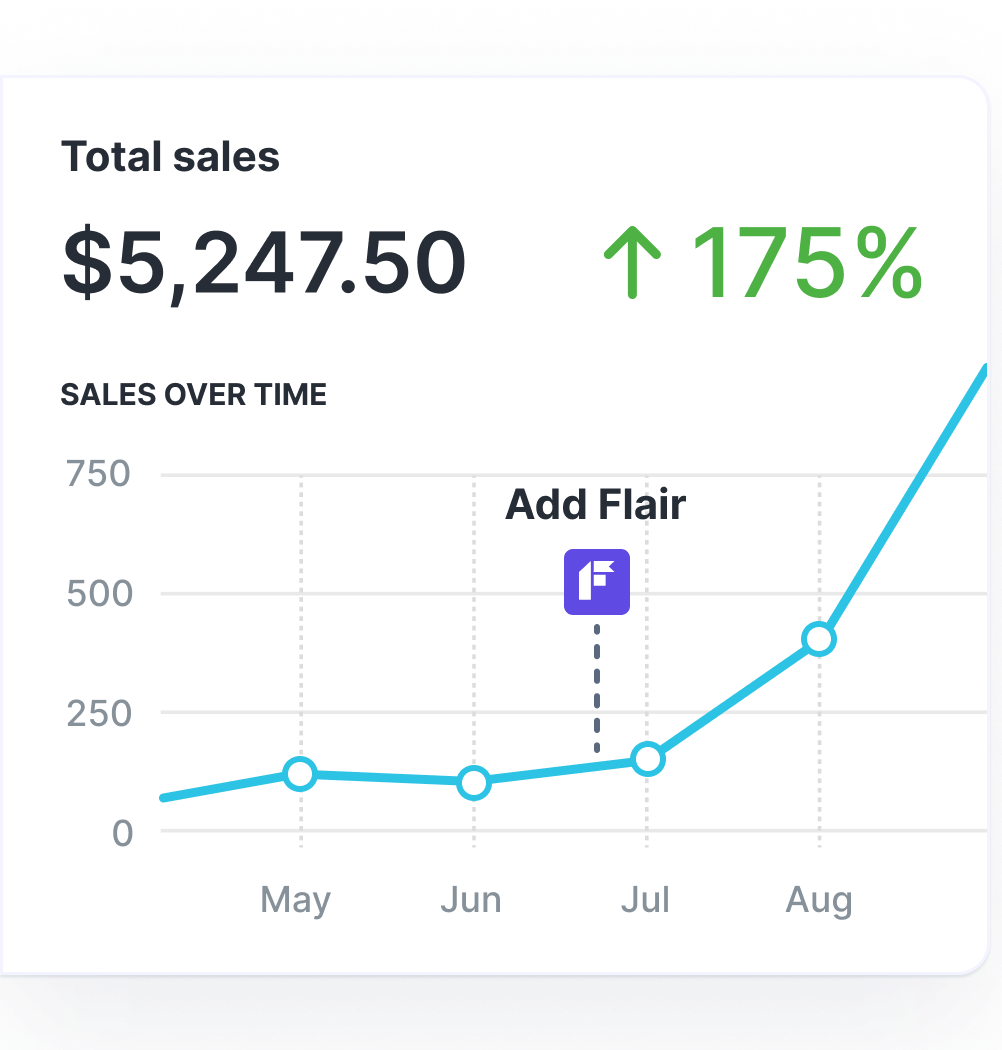
Grow Your Shopify Sales by over 175% with Flair
-
Increase sales using product badges and sales banners
-
Maximize conversions with scarcity, urgency and countdown timers
-
Automate promotions with targeted rules and scheduling
Conclusion
No one said building an e-commerce strategy is easy. It takes a ton of work — and it’s never truly finished.
But it’s well worth the effort, because it speaks to all areas of your e-commerce business, from the way you research and develop products to the perks and benefits you offer your employees.
As such, taking the time to create (and develop) your strategy is arguably the single most important thing you can do to position your e-commerce store for success.
Other FAQs
What is “Four Cs” in E-Commerce?
The “Four Cs” in e-commerce stand for:
- Customer: Identifying your target audience, their goals and pain points, and why they’d be interested in your product.
- Cost: How much do you charge for your product(s), and is your business profitable at that level?
- Communication: Building meaningful relationships with your target audience to convey the value you provide.
- Convenience: Improving your conversion rate by removing barriers to purchase.





